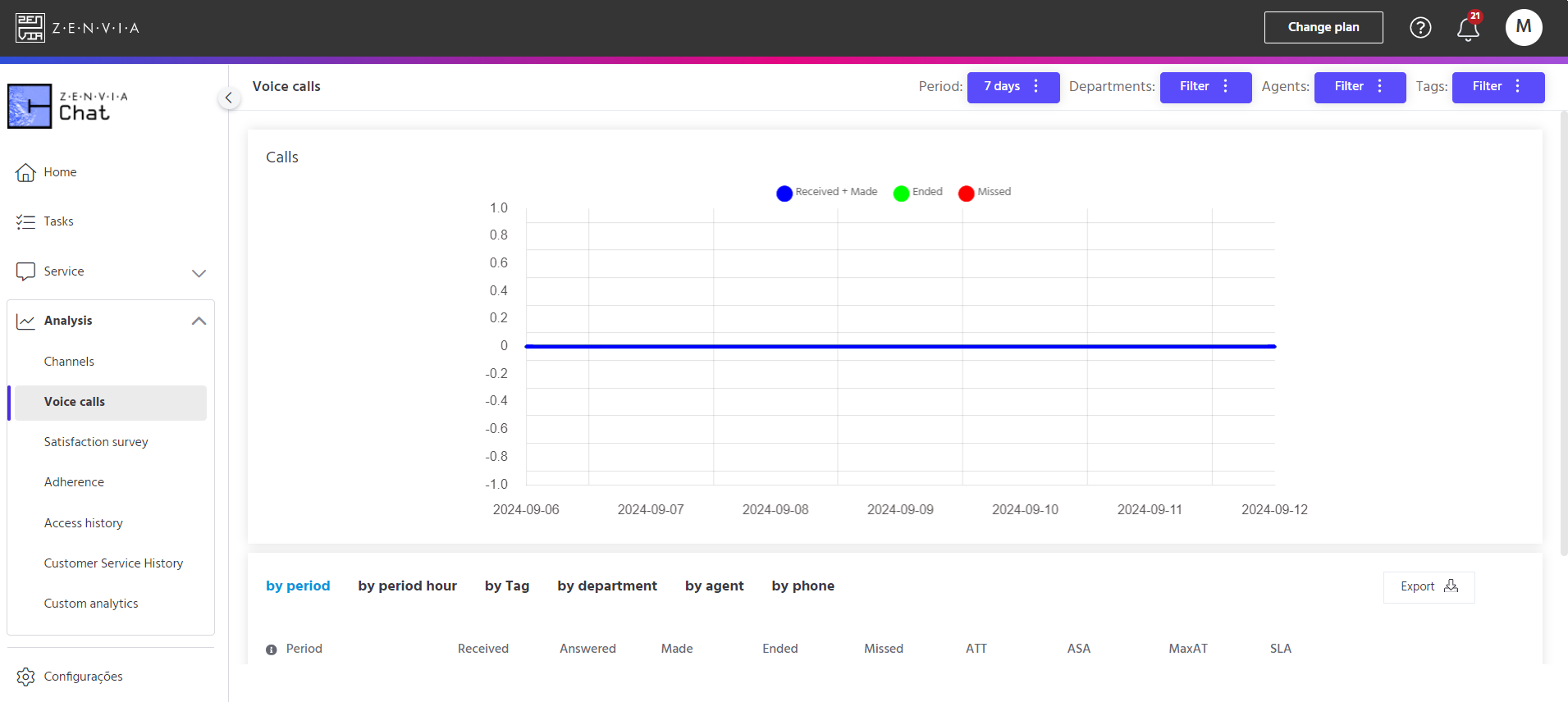In Voice calls, we have access to information related to voice channel interactions. At the top of the page, we can apply initial filters by the desired period, by one or more departments, by one or more agents, and even by one or more tags. Any filter applied in this area will affect the information on the rest of the page.
To access it, go to Zenvia Chat - Administrator Profile > Analysis > Voice calls.
Below these filters, we have a graph for quick information visualization. The goal here is to present the most relevant data in a simple way. In this graph, we can view received + made interactions, completed ones, and missed ones. A detailed explanation of what each status means can be found further down.
Scrolling down the page, we have access to a table with even more detailed information, all of which can be exported to a .csv file. All filters applied at the top of the page will be applied to this table as well.
Thus, if we filter for the last 30 days, the information displayed here will only be from the last 30 days. The default and pre-selected period is 7 days.
In this table, we can choose to view data grouped in different ways.
- By period: Each row corresponds to a day.
- By hour period: Each row corresponds to a day and time when there was at least one voice interaction.
- By tag: Each row corresponds to a tag.
- By department: Each row corresponds to a department.
- By agent: Each row corresponds to an agent.
- By phone: Each row corresponds to a phone number, meaning the integrated number(s) in the tool.
The information presented in the table includes:
- Received: total number of calls received during the period, i.e., how many times customers contacted through the voice channel. We can characterize this status as inbound calls. Received = Answered + Missed.
- Answered: calls answered by the agent, i.e., from the total number of received calls, how many were answered by an agent. Answered = Received - Missed.
- Made: calls initiated by the agent, i.e., how many times the agent initiated a call. We can differentiate this status from received by classifying it as outbound calls (not inbound).
- Ended: calls successfully answered and made, i.e., among the calls that were answered, how many were successfully completed. Completed = Made + Answered.
- Missed: calls received but not answered by an agent, i.e., how many calls "rang" for one or more agents but were not answered. Missed = Received - Answered.
- ATT: average handling time, i.e., the time counted from when the agent answered the call until its completion.
- ASA: average waiting time for the customer in the queue (automatic distribution), i.e., the average time the customer spent in the queue waiting for an agent. This time is valid when the configured distribution is automatic, and it is counted from when the call started "ringing" until an agent accepted it.
- MaxAT: maximum waiting time for the customer in the queue, i.e., the maximum time a customer waited to be answered.
- SLA: average total handling time, from the start of the call to its completion. SLA = AWT + AHT.
Done! Voice calls analyzed.

